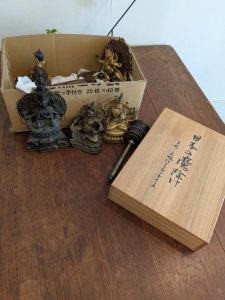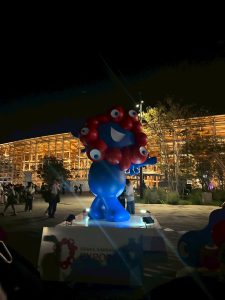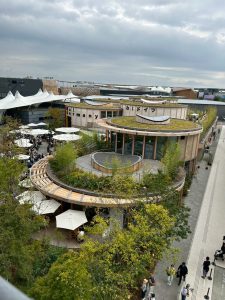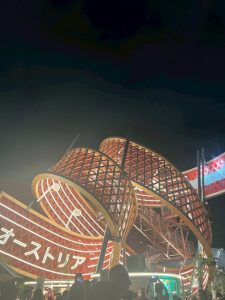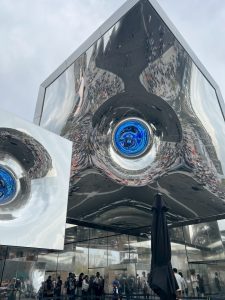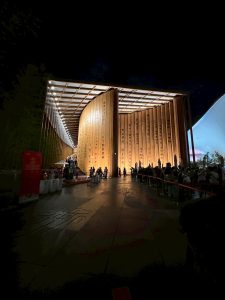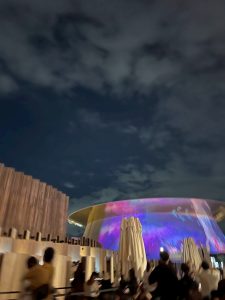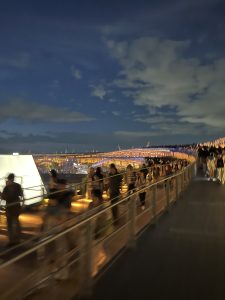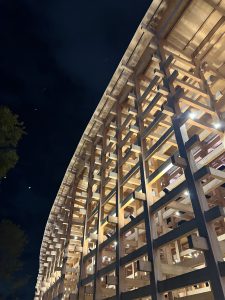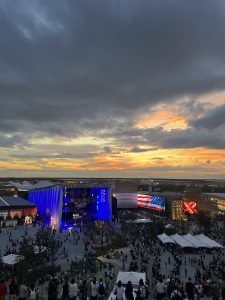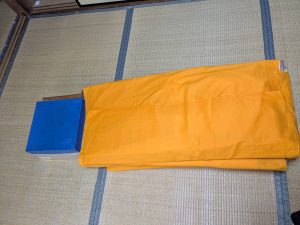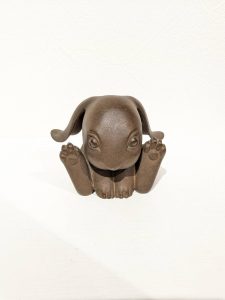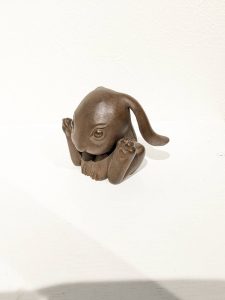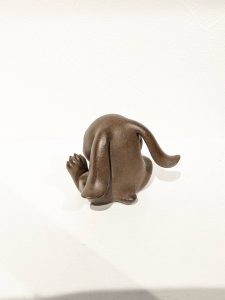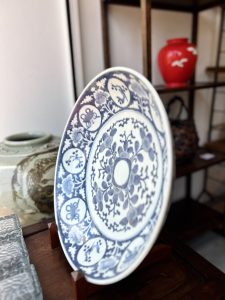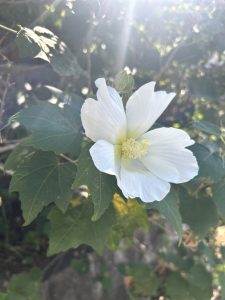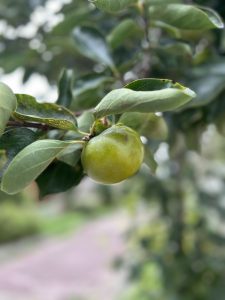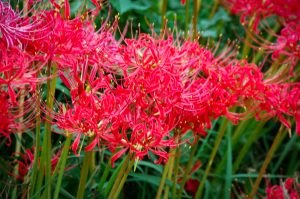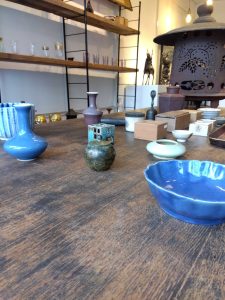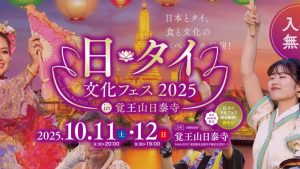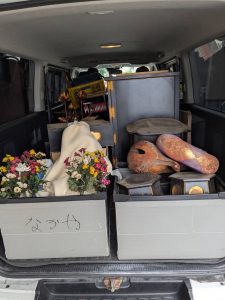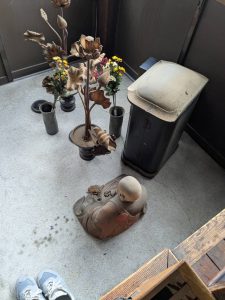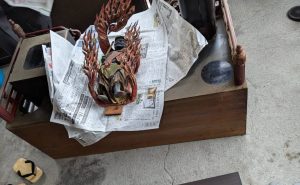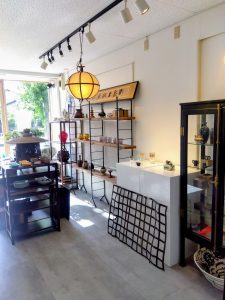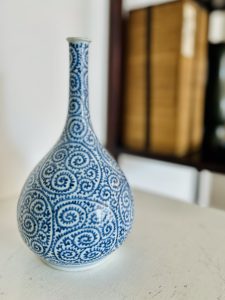今日9月25日は、骨董の日。
「骨董」と言う言葉を広く知らしめるべく、江戸時代の戯作者 山東京伝(さんとうきょうでん)が刊行した「骨董集 巻之三」に記した日付「文化十二乙亥九月二十五日」が由来となっており、京都で骨董・美術品のオークションを手がける株式会社古裂會によって制定されました。
骨董品の良さ、古き良きものの価値をより多くの人に周知し、日本の文化を愛してもらうことを目的としています。
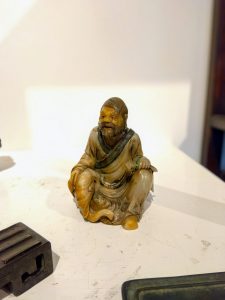
骨董品とは、希少価値のある古美術や古道具のことで、フランス語ではアンティーク (Antique) と呼ばれ、その語源はラテン語のアンティクウス(Antiquus、古い)から来ています。 骨董品というと少し手の届かないような存在に感じますが、アンティークな家具などは「エモい」と言われ、若い世代でも興味を持っている方もたくさんいらっしゃるようです。
骨董品として重要なのは「古いこと」と「希少価値」ですが、食器や文具といった日用品、玩具、貴金属や宝石を含む装飾品、衣類、家具と物品のジャンルは多岐にわたっております。
ただ、なかなか世間一般的に価値のある骨董品というのはどんなものなのか、正直よくわからないという方も多いかと思います。
では、骨董品とガラクタの違いは何だろうかと考えますと、そこに「価値があるかどうか」 ということではないかと思います。もちろん保存状態の良さもポイントになります。
ただ古いだけで使用もできず置いておきたくないようなものはなかなか価値をつけるのは難しくなります。 ですが、素人目には一見ただの古いガラクタに見えるものが、実は高価な場合もあるのが、骨董品。
例えば、大正時代のガラス瓶や昭和のレトロな看板が、最近のレトロブームで価値が急上昇したり。「実家の倉庫からこんなの出てきたけど価値ある?」といった投稿がバズることもあります。
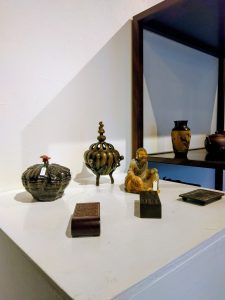
気づけば、お片付けに最適の季節になってまいりました。
風光舎にも、ご実家のお片付けなどされているお客様から、処分に困ったお品物についてのお問い合わせをいただくことが多くあります。
とある調査で、遺品整理の中で「骨董品らしきもの」を見つけた経験はありますか?それは何ですか?という質問したところ、あると答えた人は、遺品整理の過程で何らかの骨董品らしきものを見つけており、コイン・古銭、着物・帯、掛け軸・書画、陶磁器などが多くあるようです。
また、見つけても「値打ちが分からず処分した」という人や「リサイクルショップに持ち込んだ」という人も多いようで、その中には、適切に価値を活かせなかった可能性がある人もいるようです。
価値のある品をうっかり処分してしまわないよう、まずは専門家に査定を依頼することをおすすめします。
ガラクタか、お宝か。ただ古いというだけでなく価値のあるものが骨董。
骨董品を鑑定するあの番組のように、もしかして自分の身近にも…なんてことがあるかもしれません。
あと2か月もすれば年末大掃除の季節。片づけたらとんでもない掘り出し物が…出るかもしれませんよ。
ではでは、また。(スタッフT)
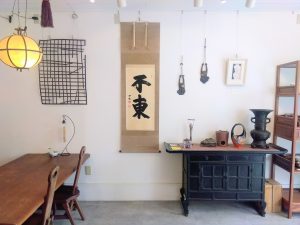
September 25th is Antiques Day.
This day originates from the date “September 25th, 1815 (Bunka 12, Year of the Pig)” recorded in “Antiques Collection, Volume Three,” published by Edo-period playwright Kyoden Sando, aiming to spread awareness of the term “antiques.” It was established by Kuretsukai Co., Ltd., which handles antique and art auctions in Kyoto.
Its purpose is to make more people aware of the appeal of antiques and the value of the good old days, fostering an appreciation for Japanese culture.
Antiques refer to rare, valuable old art and tools. In French, they are called “Antique,” a term originating from the Latin ‘Antiquus’ (meaning “old”). While antiques might seem somewhat out of reach, antique furniture, for instance, is often described as “emotional” or “nostalgic,” and many younger generations also show interest.
The key factors for an item to be considered an antique are “old age” and “rarity.” The range of items is vast, including daily necessities like tableware and stationery, toys, decorative items such as precious metals and gemstones, clothing, and furniture.
However, many people honestly don’t know what constitutes a valuable antique in the broader sense.
So, what distinguishes an antique from junk? I believe it comes down to whether it has value. Of course, good condition is also a key factor.
Simply being old and unusable, something you wouldn’t want to keep lying around, makes it difficult to assign value. Yet, antiques are precisely those items that, to the untrained eye, might seem like nothing more than old junk, but can actually be quite valuable.
For example, glass bottles from the Taisho era or retro Showa-era signs have seen their value skyrocket recently due to the retro boom. Posts like, “I found this in my parents’ storage shed—is it valuable?” sometimes go viral.
Before you know it, the perfect season for decluttering has arrived.
At Fūkōsha, we often receive inquiries from customers cleaning out their family homes about items they’re struggling to dispose of.
In a certain survey, we asked: “Have you ever found something that looked like an antique while sorting through belongings left behind?” When asked what it was, those who answered yes had found some sort of antique-like item during the process. Common finds include coins/old currency, kimonos/obi sashes, hanging scrolls/calligraphy, and ceramics.
Many also reported finding items but “disposing of them because they didn’t know their worth” or “taking them to a recycling shop.” Among these, some may have missed out on realizing the items’ true value.
To avoid accidentally disposing of valuable items, we recommend first having them appraised by an expert.
Junk or treasure? Antiques aren’t just old things—they’re valuable items.
Just like on those appraisal shows, you might find something special right in your own home.
In just two months, it’ll be time for year-end cleaning. Who knows? You might uncover an incredible find while tidying up.
Well then, see you later. (Staff T)
*******************
ご実家の整理やお片付けなどをされている方のご相談などが多くございます。
お片付けなどくれぐれもご無理のないようになさってくださいませ。
風光舎では古美術品や骨董品の他にも絵画や宝石、趣味のお品など様々なジャンルのものを買受しております。
お片付けをされていて、こういうものでもいいのかしらと迷われているものでも、どうぞお気軽にご相談下さいませ。
また風光舎は、出張買取も強化しております。ご近所はもちろん、愛知県内、岐阜県、三重県その他の県へも出張いたします。
まずは、お電話お待ちしております。
愛知県名古屋市千種区姫池通
骨董 買取【古美術 風光舎 名古屋店】
TEL052(734)8444
10:00-17:00 OPEN
#出張買取#骨董#古美術#骨董品#絵画#版画#茶道具#刀剣#彫刻
